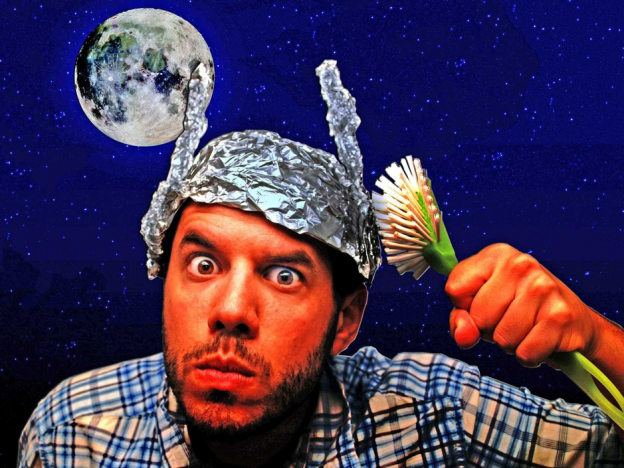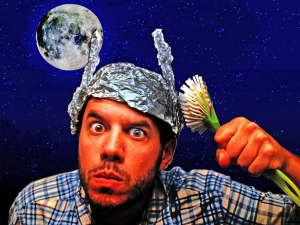A study recent by a of scientists from Vrije Universiteit Amsterdam and the NCSR in The Netherlands and Professor Karen Douglas here The University of Kent in the UK have discovered a link between conspiracy belief and “illusory pattern perception,” the tendency of the mind to see order where none exists. The group used a series of randomly simulated coin tosses and asked respondents to rate whether those tosses were actually random or in a sequence. The respondents who saw patterns in the coin tosses were also the ones who scored highest on belief in existing conspiracy theories and belief in the supernatural.
Because science isn’t done with just one experiment, they then followed up with a second run to investigate whether being prompted to look for patterns skews the results, as well as a third using abstract art instead of coin flips for the subjects to find patterns in. In addition, they “primed the pump” with one group by having them read a little conspiracy literature beforehand, which also increased credulity.
Here’s the thesis on what’s going on. The human brain is a pattern-making machine. We learn from experience and store memories together to influence our future behaviour. That gift for connection and correlation has enabled our ballistic advance as a society. But for most of human history our brains existed in a comparatively information-poor environment. It’s only in the last century or so that the rise of mass media has come to dominate our lives. Four generations simply aren’t enough time for the complex biology of our brains to adapt to that.
Subconsciously, we are desperately trying to find connections in the chaos, and many minds aren’t capable of realizing which of those connections are valuable and which aren’t. And it’s also hard for people to comprehend “true” randomness, because random sequences can create patterns and connections purely by accident. We don’t like to admit that existence is a vast and careless web of chance. Building a narrative allows us to comfortably process random events in a way that we feel control over.
The increased availability of conspiracy literature and videos has also made them more potent. As evidenced by the study, being exposed to materials that lend credence to “alternative facts” raised susceptibility in the subjects. Now that conspiracy theories are on everybody’s Facebook wall as opposed to lamp posts and crank phone calls to Art Bell, exposure is a given. What used to be fringe beliefs are now widespread, and the more they spread the more power they have.
Interestingly enough, a 2008 study might shed some additional light on the subject. It also tackled illusory pattern perception, but from the angle of the agency. In it, they found that if people had little or no control over their current situation, they were more likely to see patterns in random images like TV static, as well as more likely to believe in the supernatural. And who out there doesn’t feel like they’re losing control of their lives? We’re subconsciously reaching out for some method of ordering this chaos, even if the connections are bogus.
What’s the solution for this plague of lies? Peddlers of conspiracy theories aren’t going anywhere, especially now that they’re making money out of it. What our world really needs is more focus on critical thinking and media literacy. Rewiring the biology of our brains is a tough order, but training ourselves to ignore specious connections and focus on what can be factually proven is a good start. Check out the Foundation for Critical Thinking website for a good place to start.
https://www.geek.com/science/new-study-links-conspiracy-theorists-with-a-mental-disorder-1720483/

